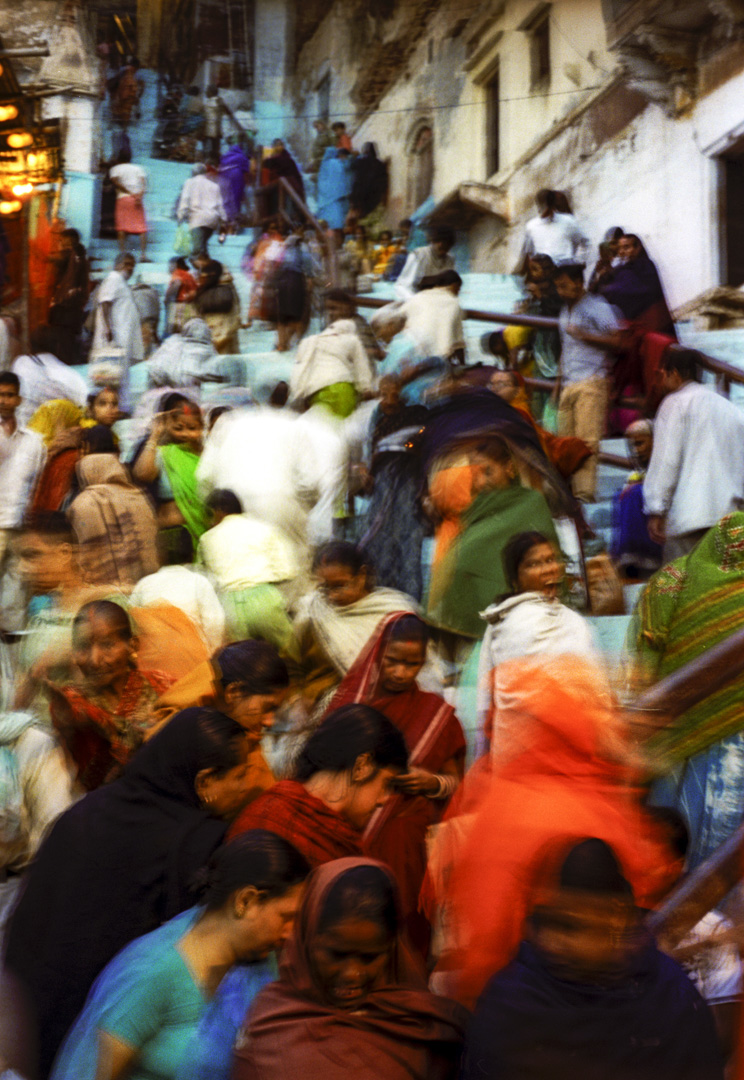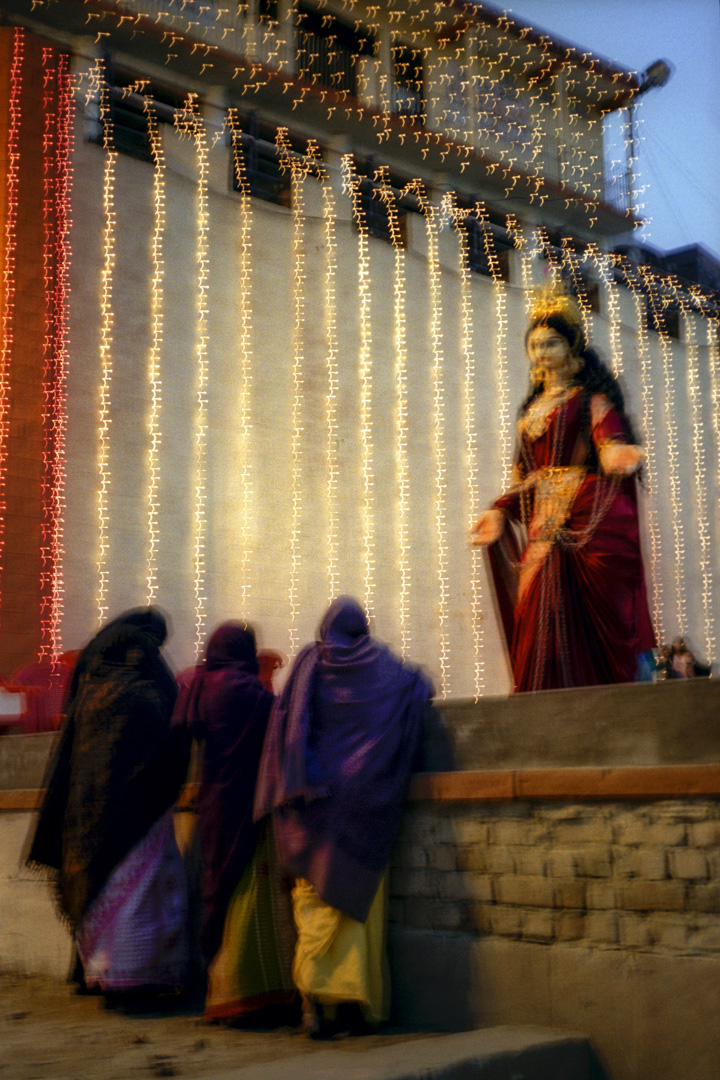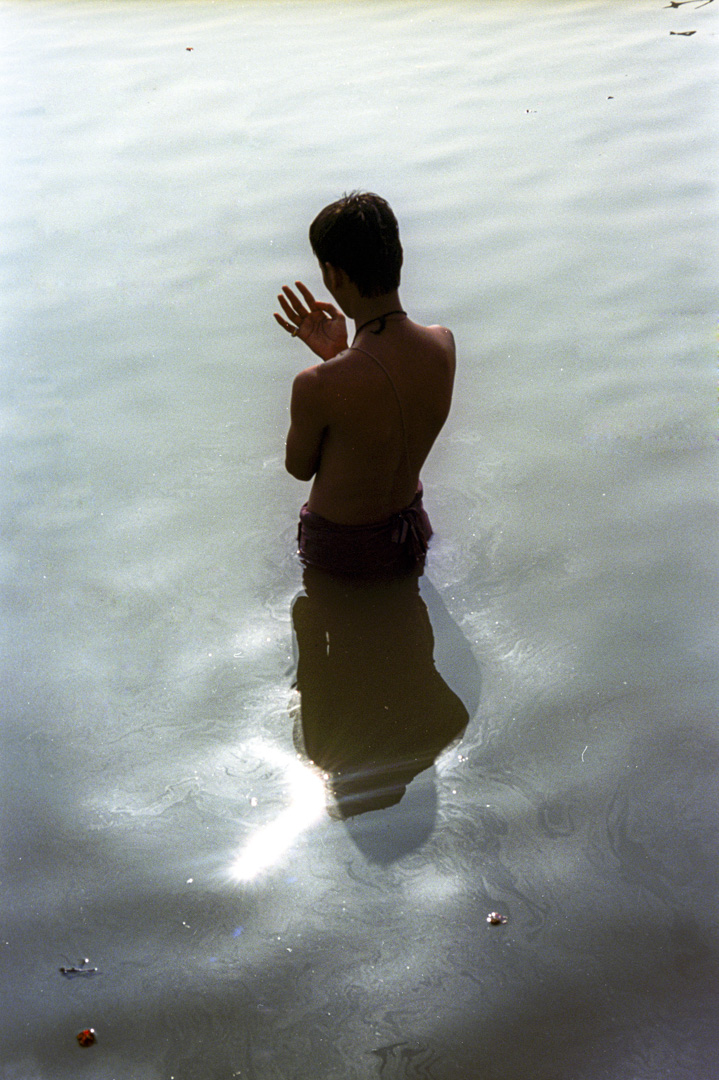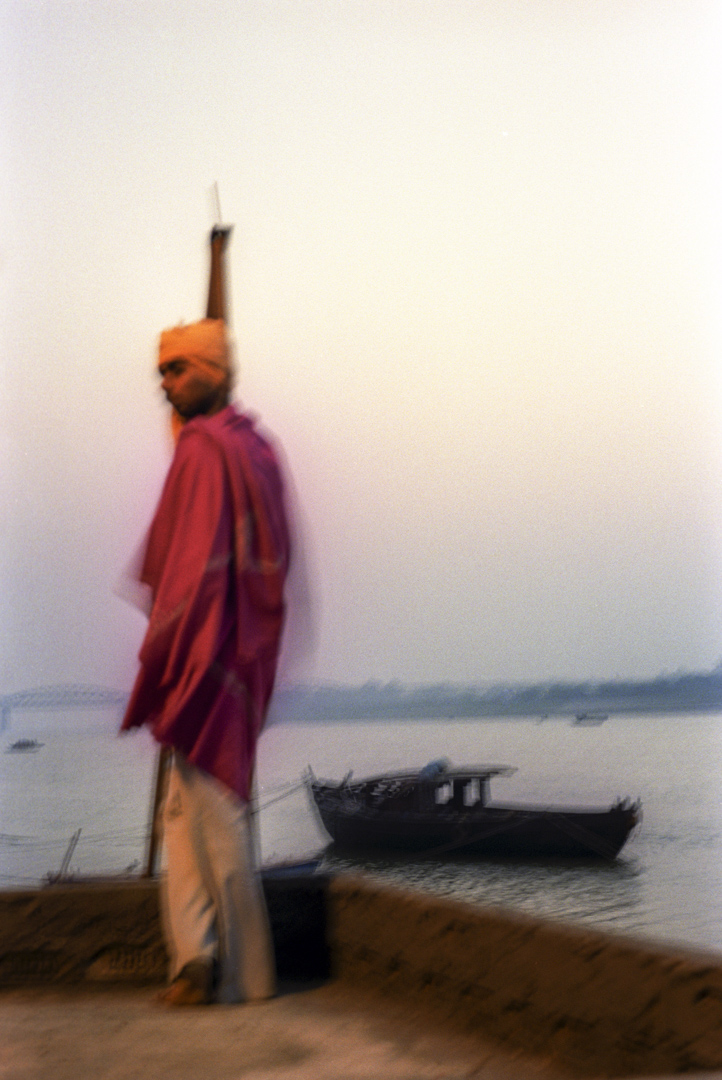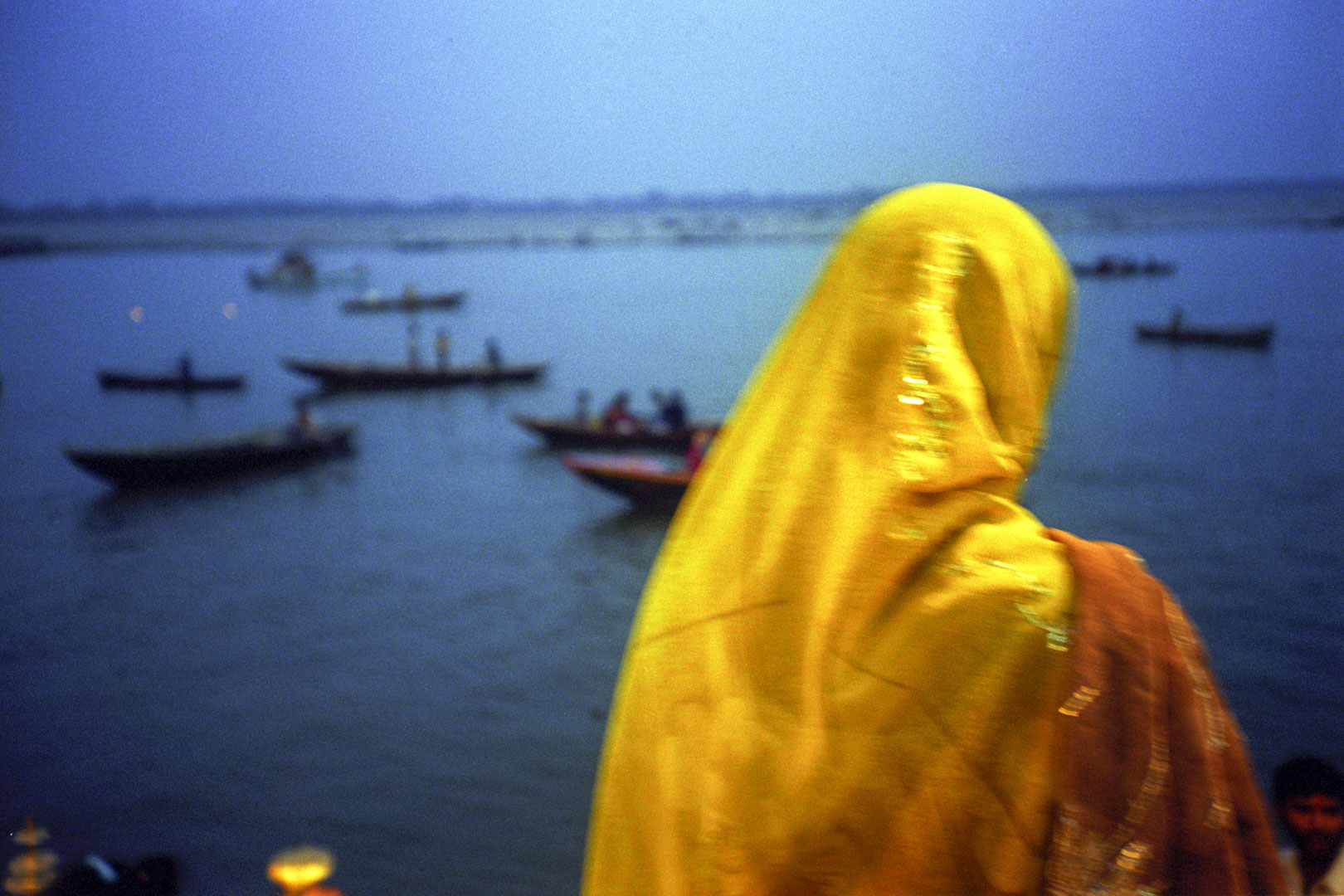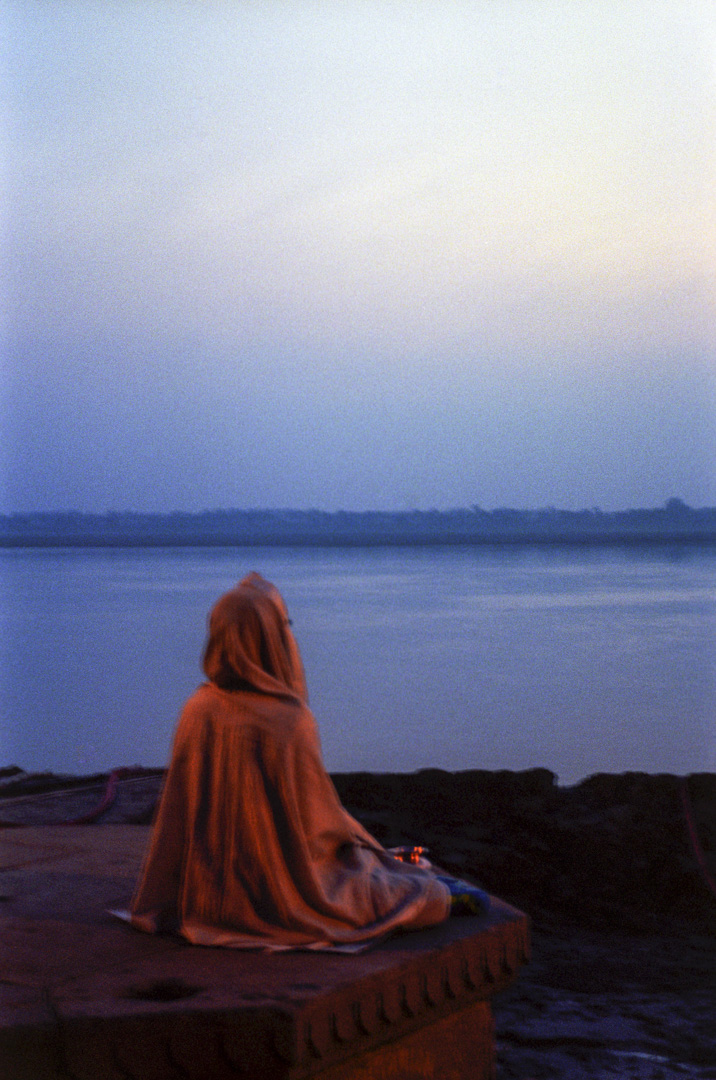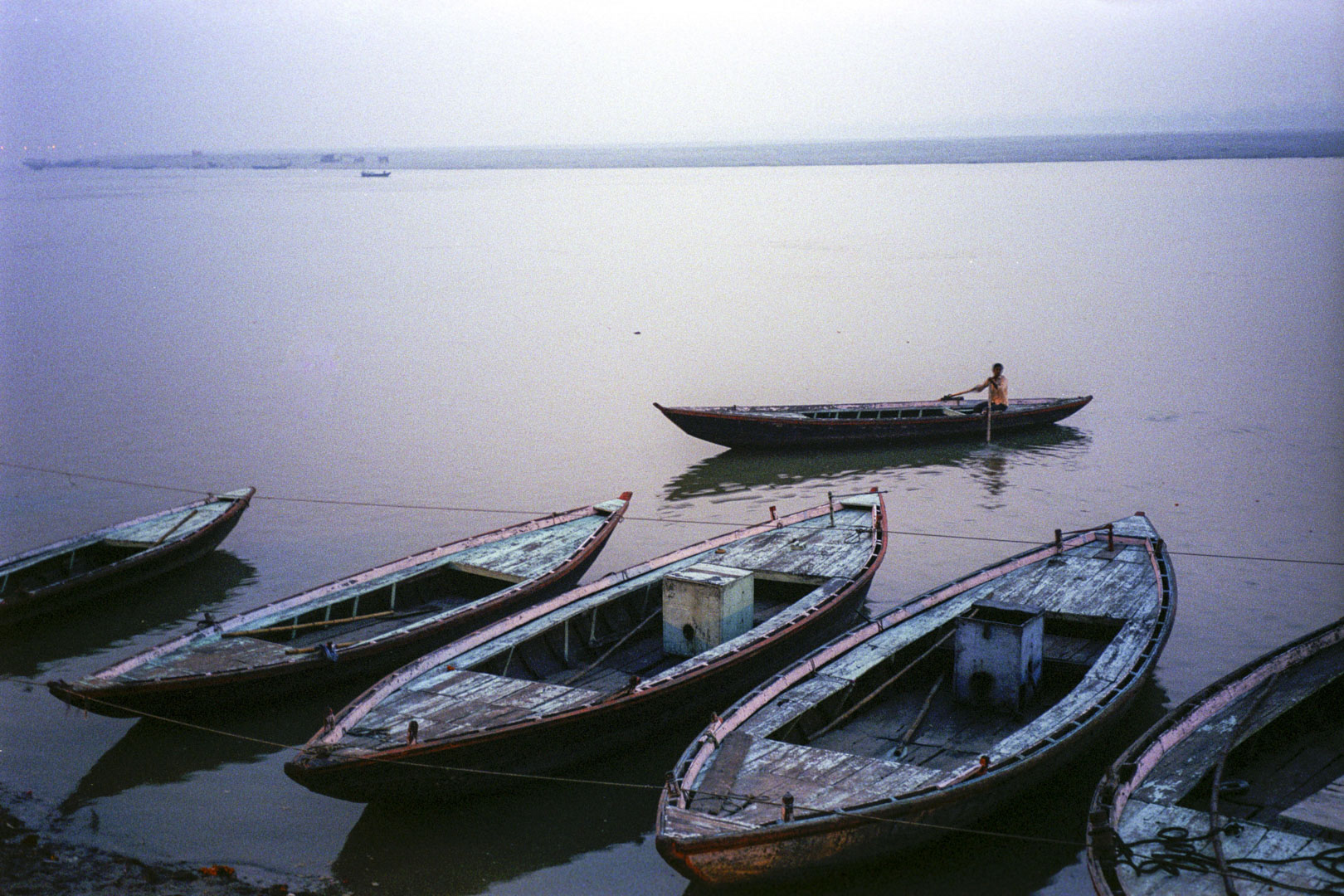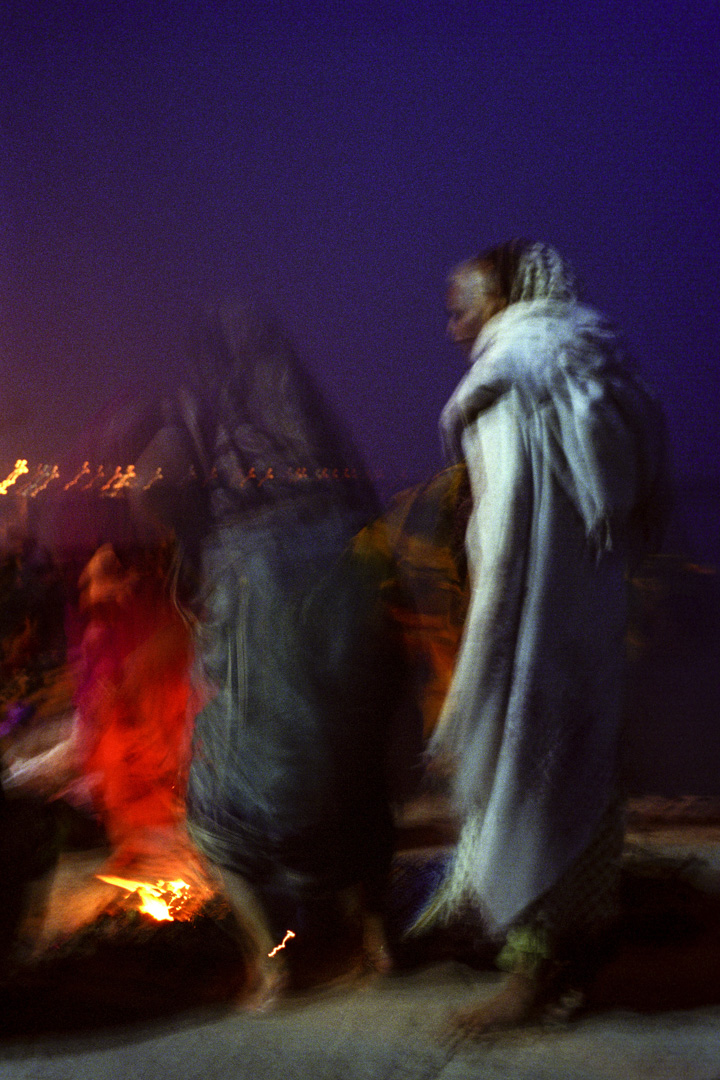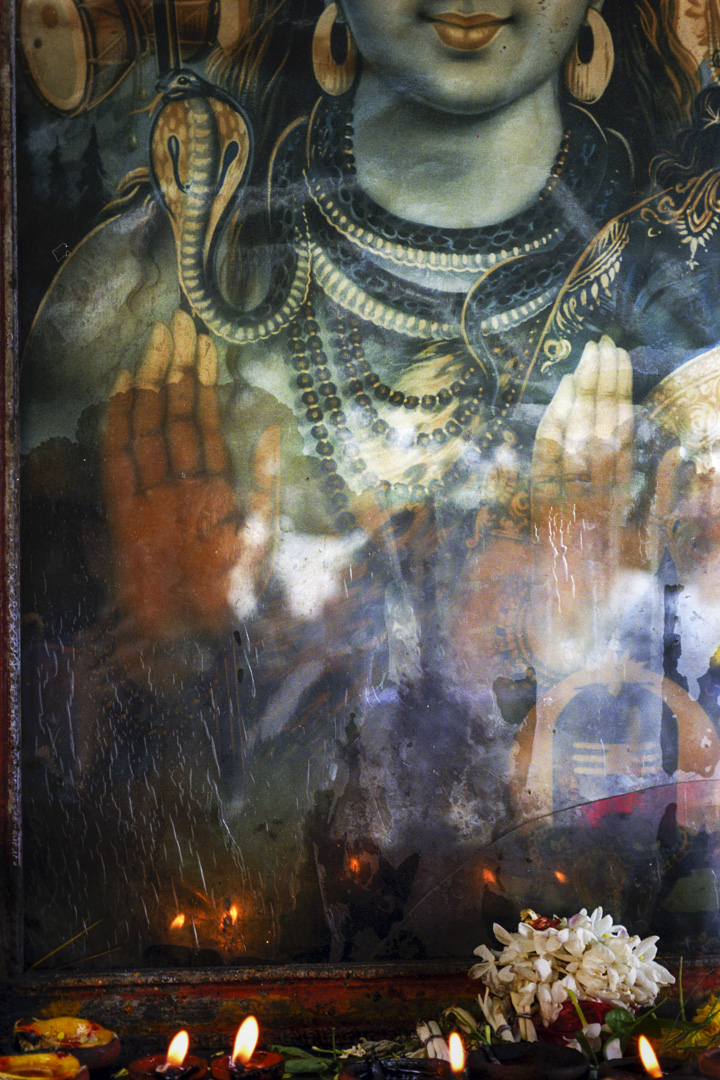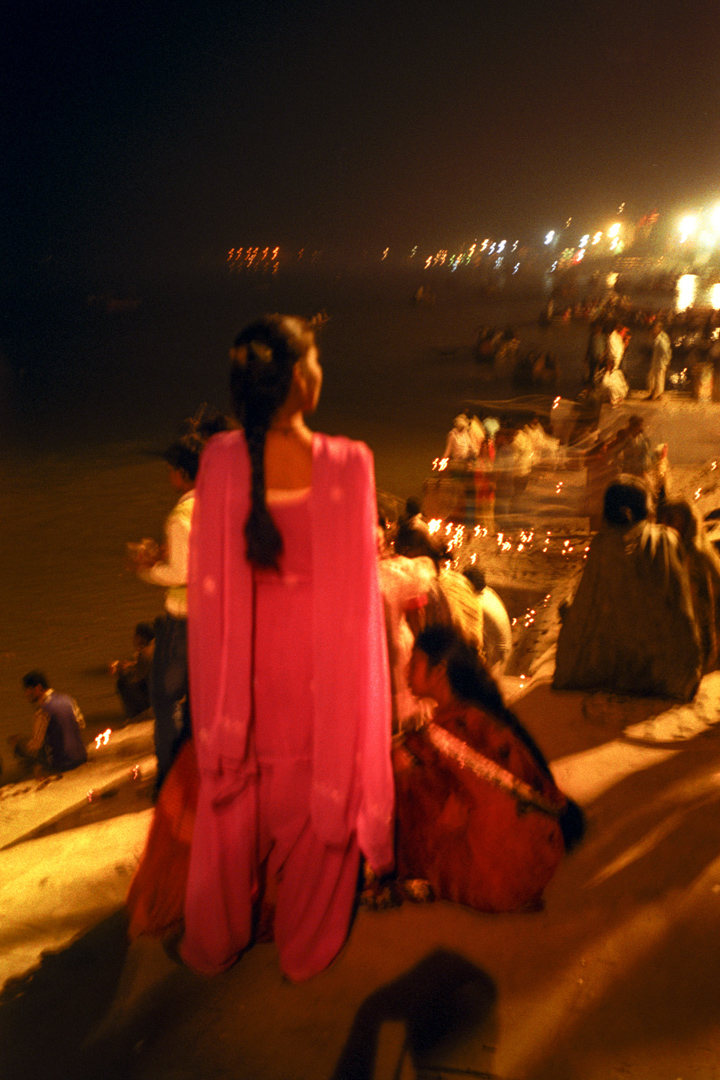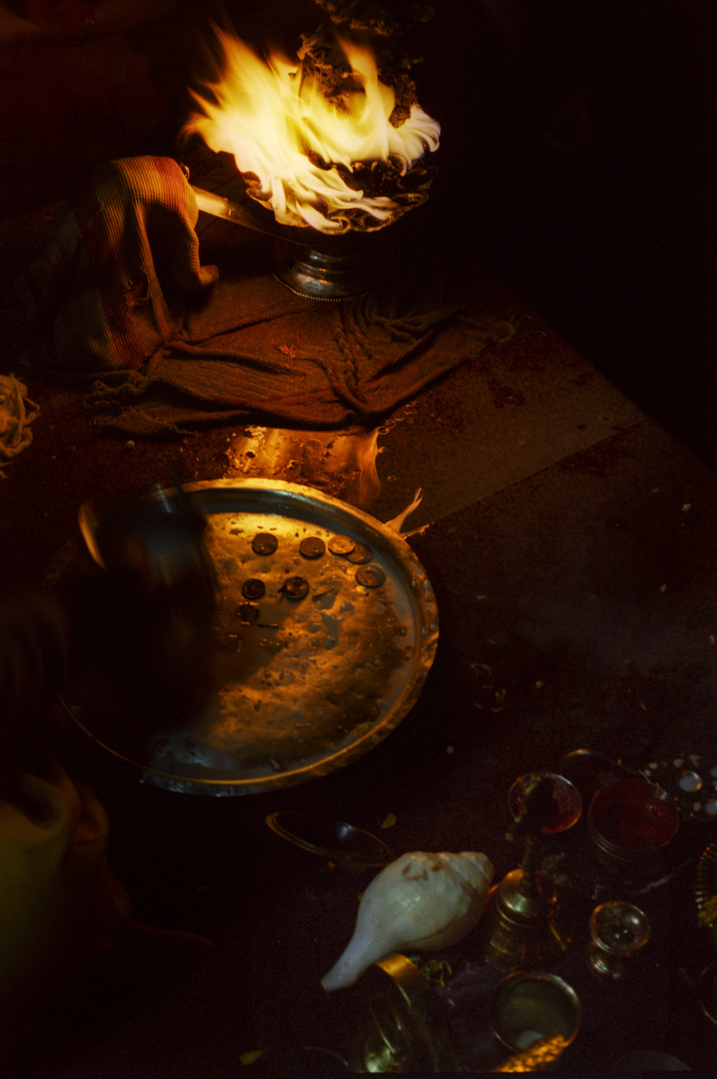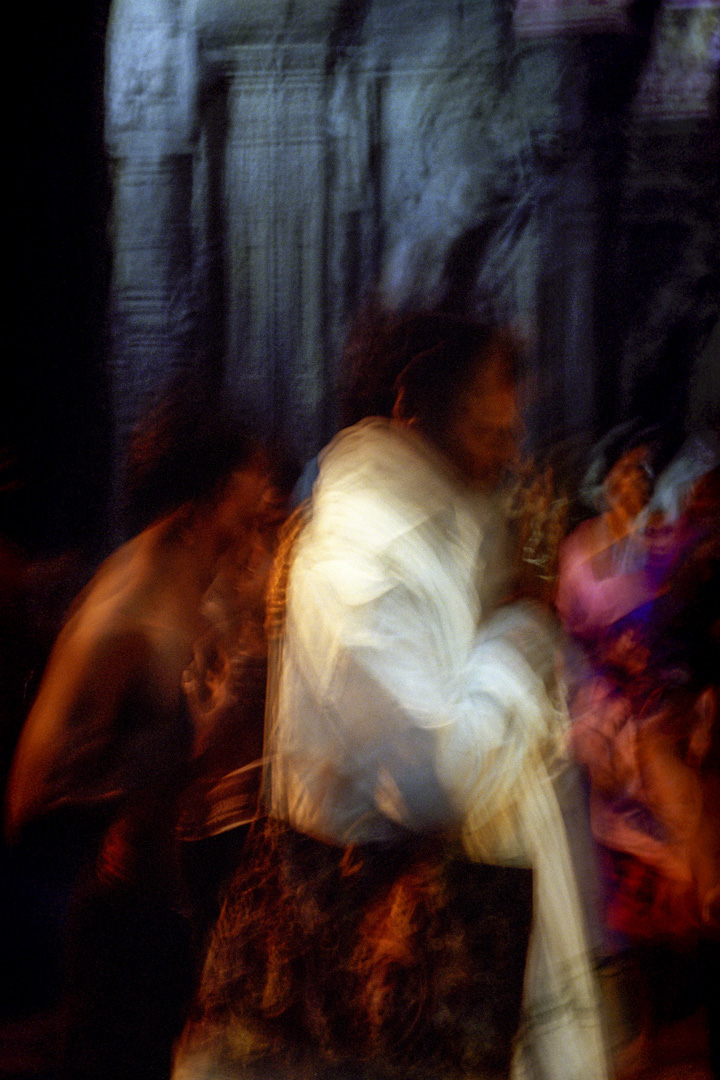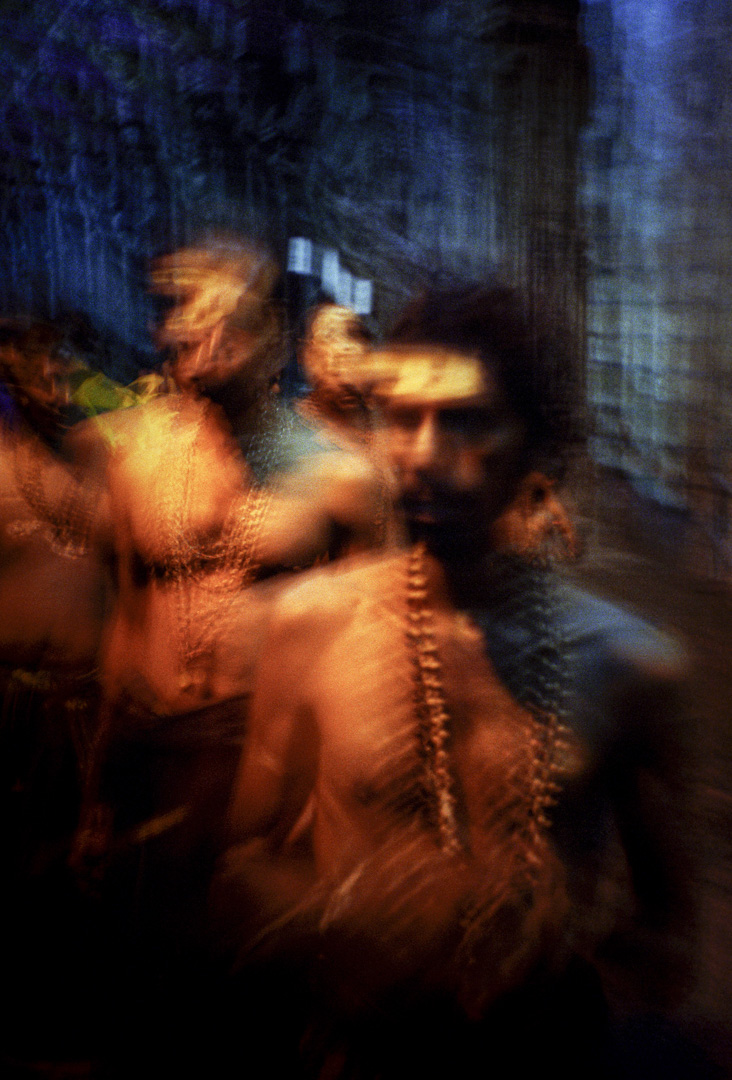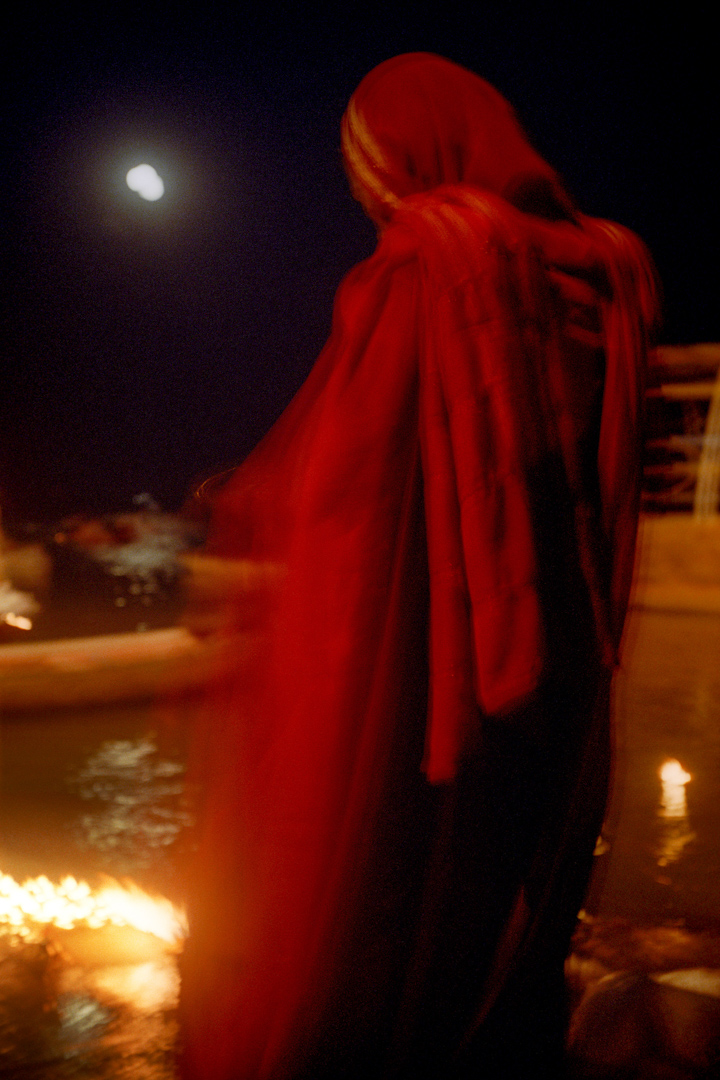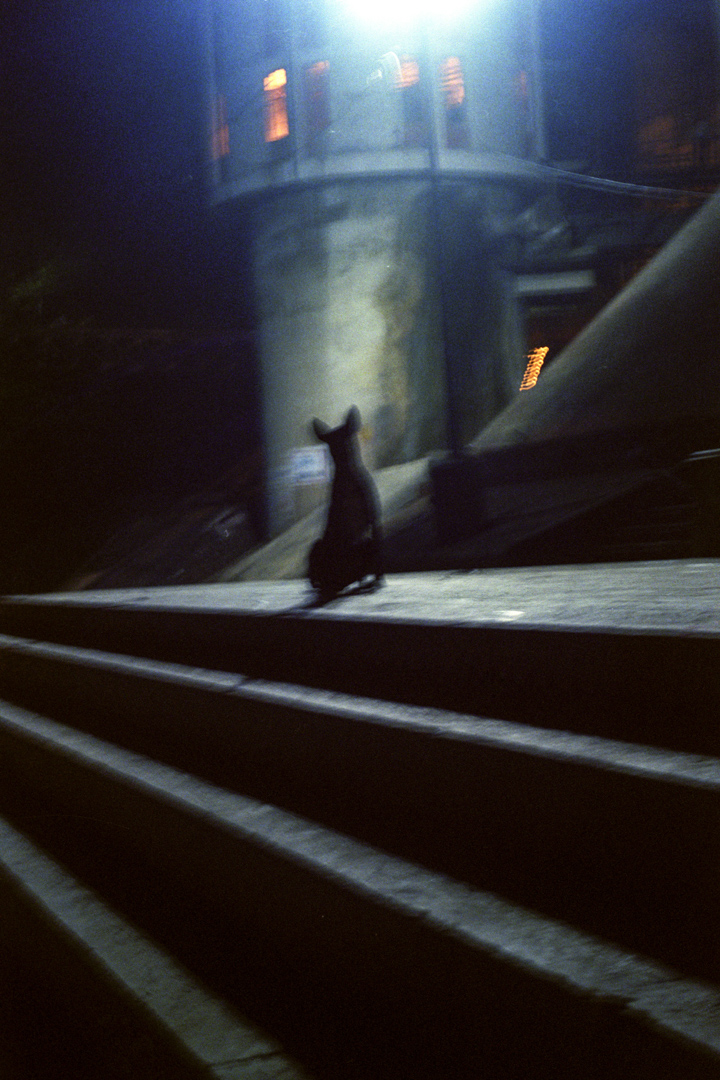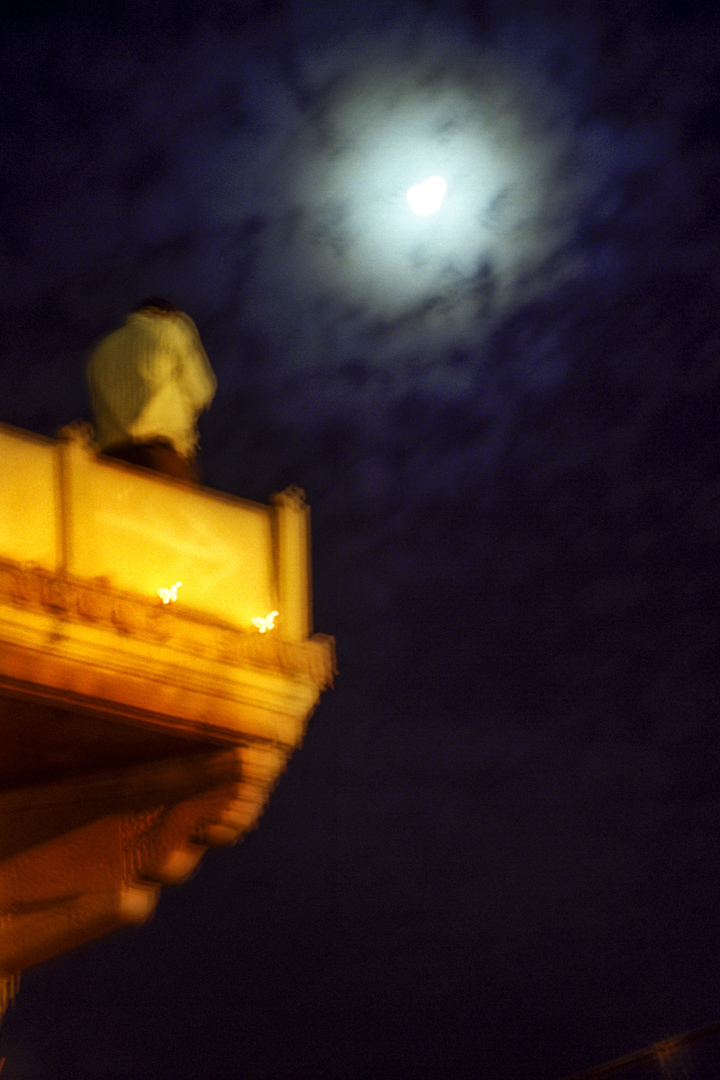The Holy Hour, 2010
« With eyes like the sun and the moon,
With blazing fire in your mouth
Heating this universe by your glorious radiance(Bhagavad Gîtâ)
In autumn of 2010 I travelled to India to photograph the pilgrims of one of the world’s most ancient religions : Hinduism. From dawn to dusk, when light blends with the elements, I went to meet these followers, focusing my work on their gestures. From the thousand years old Ghats in Varanasi and Haridwar, to the countless shrines of Southern India, I was at the heart of this complex and fascinating religion, trying to capture the mystic fervour that radiated from these beings and the divine breath exhaling from their temples.
During the Hindu festival of lights, called Diwali, a large number of pilgrims would stream towards the steps by the Ganges river in order to bathe in its sacred water, forming instinctively a “tableau vivant”. Their offerings made of flowers, fruits and tiny oil lamps, would drift along the water in a multitude of small flickering barges. Groups formed around an ash-coated sadhu, in a strange nocturnal assembly, as though awaking the sabbhat.
Clouds of smoke from nearby cremations would curl around the trident of the Hindu ascetic, sitting on his throne like a god amongst a swarm of pilgrims in complete adoration. Surrounded by small scented flames, partly veiled women would gather in circles to mix the herbs that would later serve as offerings. Faces glowing and hands covered in stylized patterns, these squatting figures seemed hypnotized by a voluble crone who rolled her eyes and raised her hands to the sky.
At dawn or dusk, the most fervent would go to pray in the heart of odorous sanctuaries, body and face lit-up only by the reflected flames. The feverish look and lively gestures of these ardent pilgrims would, again and again, touch the bronze or stone idols, around which they would gather like a swarm of bees to better worship.
While the brahmans splashed oil on the powerful Shiva linga, the faithful worshippers would prostrate themselves, while repeating mantras. Covered in necklaces made of rosewood and silver tokens, the men’s torsoes would shine in the darkness like warrior’s armour. The women, carrying armloads of offerings and their body hidden under precious saris, glided swiftly on the shining slabs, like ghosts. The atmosphere in these holy places was both mystical and supernatural.
In India, the faith is taken to such a degree of intensity it disturbs as much as it fascinates.
François Fontaine
